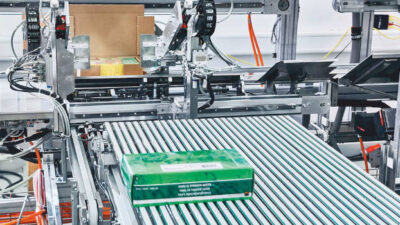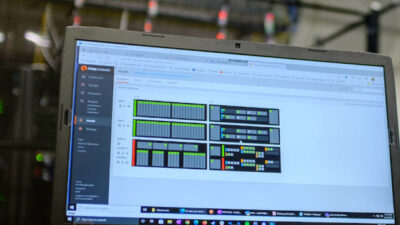Heavy snow– the worst in 50 years – continually hit southern, central and eastern areas of China in January 2008. More than 77 millions people are affected in 14 provinces, where 24 people died and direct economic loss hit 15 billion Chinese yuan.
In recent decades, other forms of extreme atmospheric conditions such as sandstorms, rainstorms, high temperature and drought have all occurred across China. Global warming caused by over-consumption of carbon-based energy is regarded as an important reason. Therefore, improvements in energy uasge has been acentral focus of concern in China.
China Energy ConsumptionToday China is the second biggest country in energy utility and energy consumption. Per unit GDP value in China is 4.3 times and 11.5 times of that in US and Japan respectively. Although China is continually phasing out aged equipment and techniques to improve energy efficiency, but
In the Outline of the Eleventh Five-Year Plan for China’s economic and social development recently released by the government, the country aims to reduce 20% of energy consumption per unit GDP by 2010. In addition, the National Development and Reform Commission (NDRC) publicized the first Energy saving Mid and Long Term Plan in China in 2004, and the Outline of China Energy saving Technologies and Policies in 2006 united with Department of Science and Technology of China, both of which cite automation technology as a significant way to help save energy.
Saving: Responsibility of AutomationProcess energy efficiency will play a central role in saving energy. A recent survey revealed that over 60% of electricity is used in industry, the majority of which can be saved up to 40% if energy efficient automation-related equipment is installed. Both single-equipment energy saving techniques (including energy efficient engines, frequency variable drives, soft starter and energy feedback) and process-wide control and energy management solutions are becoming increasingly attractive targets for energy savings:
1. Variable Frequency Drives Techniques The total power of motors in China has been over 500 million kW, and they consume 80-100 billion kWh electric energy, which covers 65% of all energy used in industry. However, only 20% of motors for fans and electric pumps employ adjustable speed drives. As a result, variable frequency upgrades for these general machines, including compressors, has been highlighted by the energy saving project prompted by NDRC. During the period of the Eleventh Five-year Plan, China is going to increase motion efficiency by 2% and save 20 billion kWh electric energy. In summary, energy saving improvements in motion systems provide the most promising investments with a potential market valuing 180 billion Chinese yuan.
China’s metal, cement, power, oil refining and chemical industries are replacing mechanical motion methods with electric and electronic ones, promoting energy efficient motions as well as upgrading to AC drives from DC step by step. At the same time, they actively conduct variable frequency with technological reconstruction, apply soft starters and Static Var Compensators, and so to improve energy using efficiency.
In China’s variable frequency drive (VFD) market, ABB is perceived as a leader in both technological leadership and market share. The Direct Torque Control (DTC) technique, for example, was developed and supported by ABB and is one of the most advanced methods for controlling AC asynchronous motors, which can increase high-speed control accuracy without feedback of encoders. ACS-800 is representative of products based on DTC of ABB, having up to 300Hz control frequency and amazing control accuracy within 0.2 second. ABB Beijing Drive Systems Co. Ltd., as a branch in China for AC and DC motion products, produces and sells motion products appropriate for speed control of motors from 0.12KW to 4000KW. Its products have been widely applied in industrial conveyors, compressors, elevators, fans and pumps, so benefit for ABB users with saving 30 billion kWh electric energy in past 12 years.
On the other hand, using worldwide popular converter energy feedback technology, SINAMICS G120 released by Siemens satisfies the requirement of saving energy in design. With totally new designed circuits 100% feed-backing energy reproduced in motion braking, as well as a particular structure improving the flexibility and reliability of the control system, SINAMICS G120 save expensive energy and reduce the building and maintenance cost greatly.
2. DCS and Advanced Process Control Distributed Control System (DCS) is always an essential safeguard for improving efficiency, guaranteeing safety, saving energy and reducing consumption, and especially important for improving high energy consumption equipments in China’s oil refining and chemical industries. The leading fourth generation DCS systems in the world have been introduced in China, such as Industrial IT from ABB, Experion PKS from Honeywell, PlantWeb from Emerson, A2 from Foxboro and R3 from Yokogawa.
Hollysys, a local automation company which was selected as one of top 50 automation vendors by ARC, also released its fourth generation DCS product—HOLLiAS MACS series in 2002, and then developed several specific platforms for different vertical industries. For example, Circle Flow Bed Boiler (CFBB) for thermal power has higher combustion efficiency and lower discharge, and even can make the best of low quality coal, but requires more for process and control accuracy of key parameters like boiler temperature. Hollysys realized the advantages of CFBB in energy saving ten years earlier, began studying relevant control rules, and promoted a set of DCS control systems for power industry. With years of experience, Hollysys established a series of control solutions for different types and sizes of CFBBs, with over 300 successful application cases, helping to use combustion coal efficiently.
Advanced Process Control (APC) based on DCS is also an important method facing system optimization. As a control method involving scientific control theories, APC brings out the best of DCS and traditional control systems, keeps production equipments running well, and saves energy noticeably.Honeywell’s advanced control and local optimization system, Profit Suite, employs multi-variable estimation control and large scale dynamic optimization techniques, so to benefit greatly for enterprises in economics with operating control systems stably and reducing energy consumption. Currently, near 200 sets of Profit Suite has been deployed in over thirty plants of Sinopec and Petro China, covering normal decompressing, catalyzing, cracking, continual reforming, gas separating, polypropylene and PTA processes etc.
3. Systematic Energy Management Portfolio As an integrated system combining software and hardware, energy management solutions provide automatic control for power monitoring; heating, ventilation and air conditioning (HVAC), refrigeration and floor auxiliary equipments. These solutions also act as strategy for scheduling and optimizing resources across the enterprise. In such a field, Rockwell Automation has been conducting business in China for twenty years, offering complete solutions for most applications.
Power & Energy Management Solution (PEMS) by Rockwell Automation involving HVAC sensors, Powermonitor, Combined Generator Control Module (CGCM), and software such as RSEnergyMetrix, RSPower etc., with communication network and service, assists users to monitor, collect, analyze, save, real-time share energy data. Meanwhile, power control is achieved by combining PEMS and Logix Controller, Motor Control Center (MCC) and drivers. China’s metal industry benefits a lot from PEMS, e.g., some steel mill saves about two million Chinese yuan power fee.
4. Contract Energy Management Service Contract energy management services first powered-up in America and Europe in the 1970s, but they are still at the developing stage in China. However, this practice is beginning to become more popular in China and companies like Siemens lead the automation vendors in this area.
Learning from leading energy saving experience, Siemens prompts energy saving commercial models, offering contract energy management based on rent in related technology reconstruction projects. The Wulan cement project in Inner Mongolia since 2006 is the first application of Siemens A&D Group employing contract energy management, which is financially supported by Nanfang International Rent Company, technically supported and audited by Siemens and reconstructed by Wulan Cement Group. After online measurement of 168 hours, sixteen
Pioneers in China’s Energy SavingMainstream automation vendors are engaged in China’s energy saving market with great enthusiasm.
1. ABB: the Greenest Energy is the Saved In November 2006, ABB made an agreement with Guangdong province government about strategic cooperation in energy saving. According to this agreement, ABB will provide energy saving solutions and methods for several large energy consumption enterprises of Guangdong province in next five years, spread energy saving technical standards and relevant suggestions, and so facilitate Guangdong to fulfill the target that reduces 16% of energy per unit GDP value.
It is reported that converters of ABB have saved 30 billion kWh electric energy for China’s users in the past twelve years, equal to the generating capacity of a large power station in six years. In addition, motors of ABB also save 2.1 billion kWh electric energy. In the project of Tonghua Steel Mill in Jinlin province, ABB provide high-voltage AC drives system for the new built 1,000,000 t cold rolling project, with using world leading DTC technique to reduce energy consumption greatly. In 2007, following the energy saving contract by ABB and Shanghai Coking Ltd., ABB ACS800 converters were setup to control high pressure coal slurry pumps. This project is estimated to save 1.4 million kWh energy per year, valuing 600 tons of standard coal.
An energy efficiency improvement plan is designed by ABB, which includes quick estimating prices and profits, evaluating risks, plan improving, periodical result checking as a sustainable energy management improvement process and continual energy saving effort. 5-20% of energy consumption is expected to be saved through the conduct of this plan.
2. Siemens: Complete Local Cooperation Siemens Energy saving Center is the only interface between Siemens group and users in China, now works well together with Energy Saving Association of China, financial partners and energy saving companies, and participates in energy saving exhibitions held in Guangzhou, Shanghai and the Global Motor Efficiency Forum. In September 2007, Siemens made an agreement with Shandong province government about comprehensive cooperation in energy saving, and over fifty enterprises express their hopes to collaborate with Siemens in energy saving field.
Successful industry cases involving Siemens A&D Group are well known. In the past ten years, DC converters can act good examples with total setup reaching 14,000MW, and helping China saving 5 billion Chinese yuan, of which, over 500 low & mid voltage converters have been installed, and 500 million Chinese yuan is saved. In the project of Delong Steel Mill, Hebei province, two perfect harmony frequency converters, with 635KW and 1600KW respectively, are offered by Siemens and installed in cleaning fans, achieving average 40% save of energy. Similarly, Taicang Power Plant, Jiangsu province, deploys twenty perfect harmony frequency converters of Siemens, four of which are in Cyro pumps help the enterprise to return all investment only in nineteen months, with saving 3.4 million yuan per year.
3. Rockwell Automation: Green for Tomorrow The focuses of Rockwell Automation are in petro and chemical, power and electric, metal and manufacturing industries regarding to energy saving. In power field, Weihai Power Plant, Shandong, selecting the solution from Rockwell Automation, reduces energy consumption with 45%; in metal industry, Liuzhou Steel Mill, Guangxi, decreases electric energy with 63%; in chemical industry, Yangzi Chemical Ltd., Jiangsu, saves 100 thousand kWh per month, and cuts the cost of $74,000 down per year; in cement industry, Lafarge Cement Plant, Dujiangyan, Sichuan, eliminates $ 24,000 of the maintenance cost of engines, and at the same time improves the efficiency with 10%, so saves cost of $124,000.
From 1st to 5th, Sep. 2007, Rockwell Automation organized the China Energy Week in Beijing, with the topic of for Green Tomorrow, introducing how to integrate solutions of Rockwell Automation in energy field to provide automatic equipments with best energy management portfolio.
For the China strategy of Rockwell Automation, Mr. Xie Ruixin, the marketing manager of Rockwell Automation China, highlights, “ Rockwell Automation will regard tasks in power, water, petro, gas, mine and infrastructure as the core ones, so to offer advanced energy management solutions and services for those enterprises in energy exploitation and companies with high energy consumption”.
— Kenny Fu , Chief Editor, Control Engineering China



